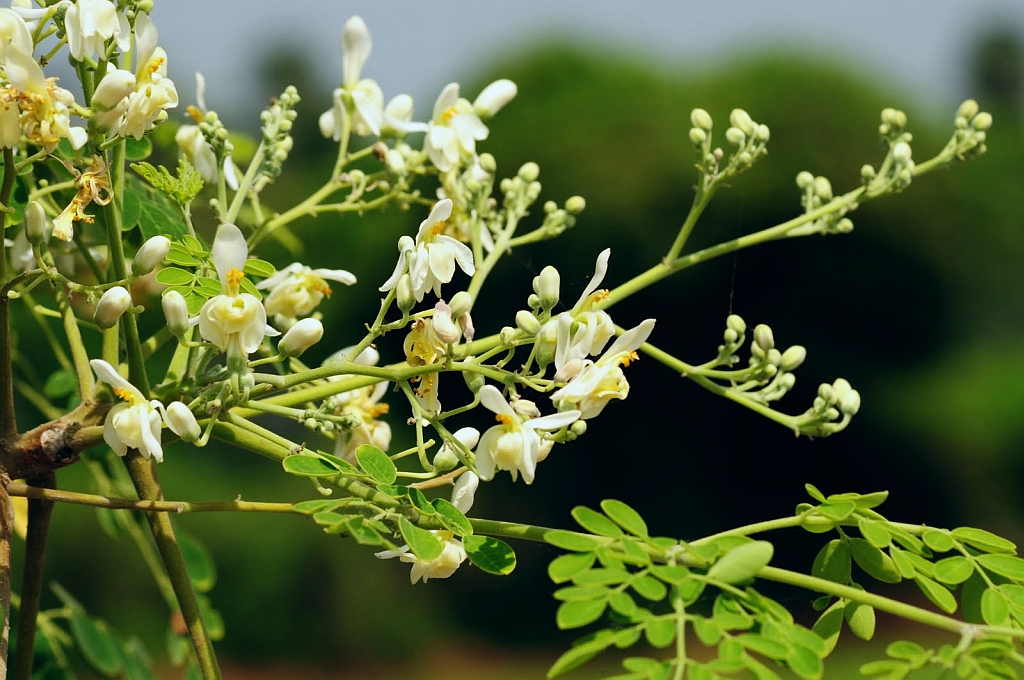NAWT Blog & Latest Updates
Stories, news, and updates from Nhaka Afrikan Worldview Trust. Click a title to read more.

Introduction
Moringa oleifera, known as the "miracle tree," is a fast-growing, drought-resistant tree native to India but now widely cultivated in tropical and subtropical regions, including Zimbabwe. Its reputation for nutritional and medicinal value has made it a vital resource for communities, especially in the northern regions such as Binga, where it was introduced about 20 years ago. Moringa thrives in poor soils and with minimal water, making it a sustainable crop for rural areas.
Nutritional and Medicinal Benefits
Moringa is exceptionally rich in vitamins (A, C, B), minerals (calcium, iron, potassium), and antioxidants. These nutrients support immunity, wound healing, blood sugar management, and cardiovascular health. Research suggests moringa may help with malnutrition, anemia, and even chronic conditions like diabetes and hypertension. Its leaves, pods, and seeds are all edible and used in various forms—fresh, cooked, or dried and powdered. In Zimbabwe, moringa is traditionally used for cooking, treating ailments, and as livestock feed. The leaves are often cooked like spinach or dried and powdered for soups, while the pods and seeds are also consumed. Medicinally, moringa is used to help manage blood pressure, diabetes, and skin conditions, and is believed to boost immunity and support those with malnutrition.
History and Traditional Uses in Zimbabwe
The plant's history in Zimbabwe is linked to Indian traders who brought it via the Zambezi River. Over time, it has become part of the local diet and is encouraged by health authorities for children under five to combat malnutrition. Moringa's uses extend beyond food and medicine: it is also used for water purification, as fodder, and as a source of oil for cooking and cosmetics. Traditionally, moringa is eaten as cooked leaves or pods, used medicinally for blood pressure, diabetes, and skin issues, and even as fodder for livestock or for water purification. Its economic value is also growing, with nurseries selling seedlings and communities generating income from moringa products.
How Moringa is Used
Moringa can be consumed in several ways: fresh leaves and pods are cooked as vegetables, dried leaves are powdered and added to soups or sauces, and seeds can be eaten green or fried. Moringa supplements are available as capsules, tablets, or teas. The oil extracted from seeds is used for cooking and in cosmetics. In Zimbabwe, moringa is also used for water purification and as animal fodder, demonstrating its versatility.
Precautions and Warnings
While moringa is generally safe, pregnant women should avoid the root, bark, or flowers due to the risk of uterine contractions. Those on medication for thyroid, diabetes, or blood pressure should consult a doctor before use. As with any supplement, quality and source matter—purchase from reputable suppliers. Moringa is not a substitute for medical treatment, and persistent health issues should prompt a doctor's visit.
Conclusion
Moringa stands as a beacon of nutritional and medicinal potential in Zimbabwe, supporting food security, traditional healing, and economic opportunities. Its ability to thrive in challenging conditions and its diverse uses make it a vital resource for communities across the country. As research continues, moringa's role in health and nutrition is likely to grow even further.
Discover how NAWT empowers Mutasa communities through innovative climate resilience projects, combining traditional knowledge and modern education. Our work focuses on sustainable agriculture, water harvesting, and community capacity building in partnership with local and international organizations.
Read full articleIt's been a vibrant season at NAWT! We're excited to share some of the latest happenings and ongoing work across our organization:
- Student Attachments: We welcomed several university students on attachment, who are gaining hands-on experience in community development, project management, and sustainable agriculture. Their energy and ideas are making a real difference!
- Ongoing Projects: Our teams continue to work on climate resilience, women empowerment, and health & sanitation initiatives. Recent highlights include:
- Expanding nutrition gardens in Mutasa and Marondera
- Supporting women's income-generating activities
- Promoting clean water and hygiene in rural communities
- Community Engagement: We've held workshops, training sessions, and community meetings to ensure everyone's voice is heard and needs are met.
We're grateful for the dedication of our staff, volunteers, and partners. Stay tuned for more updates, and don't forget to check out our Projects Gallery for more stories and photos!
